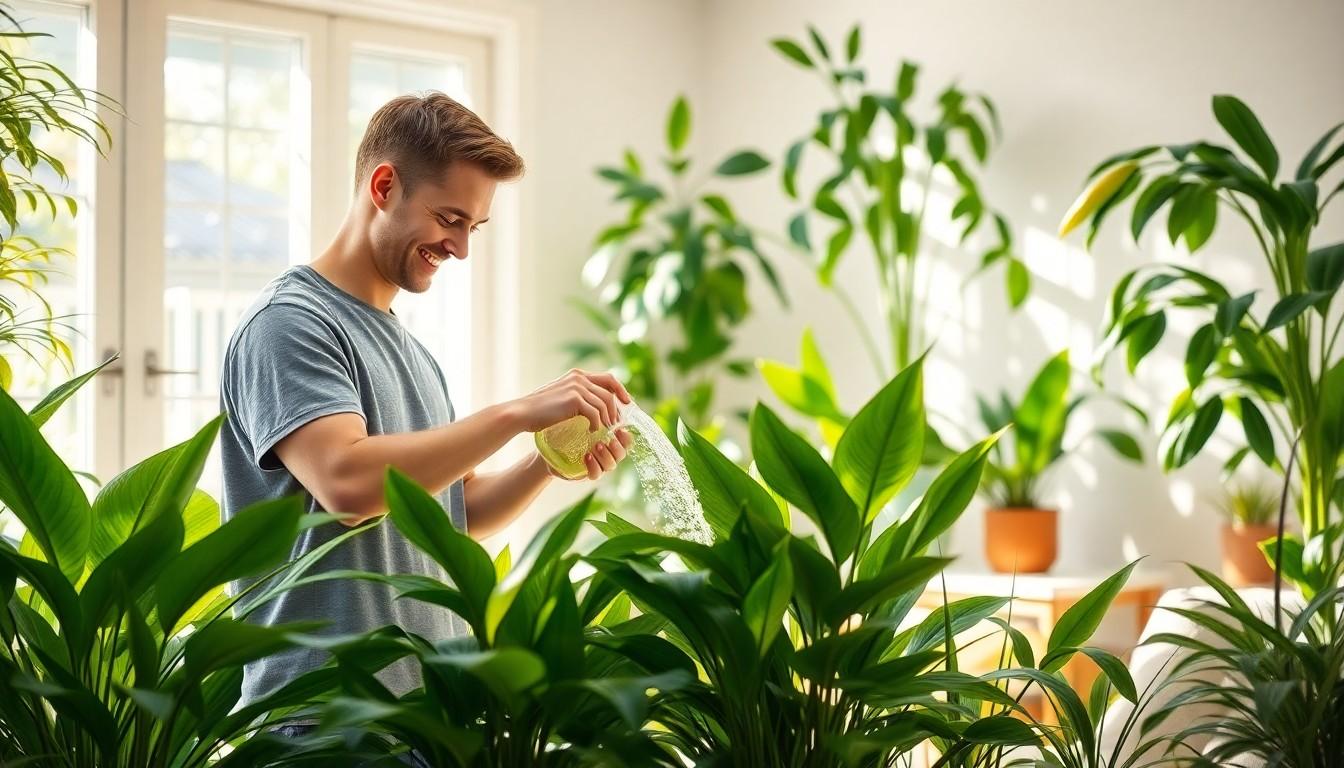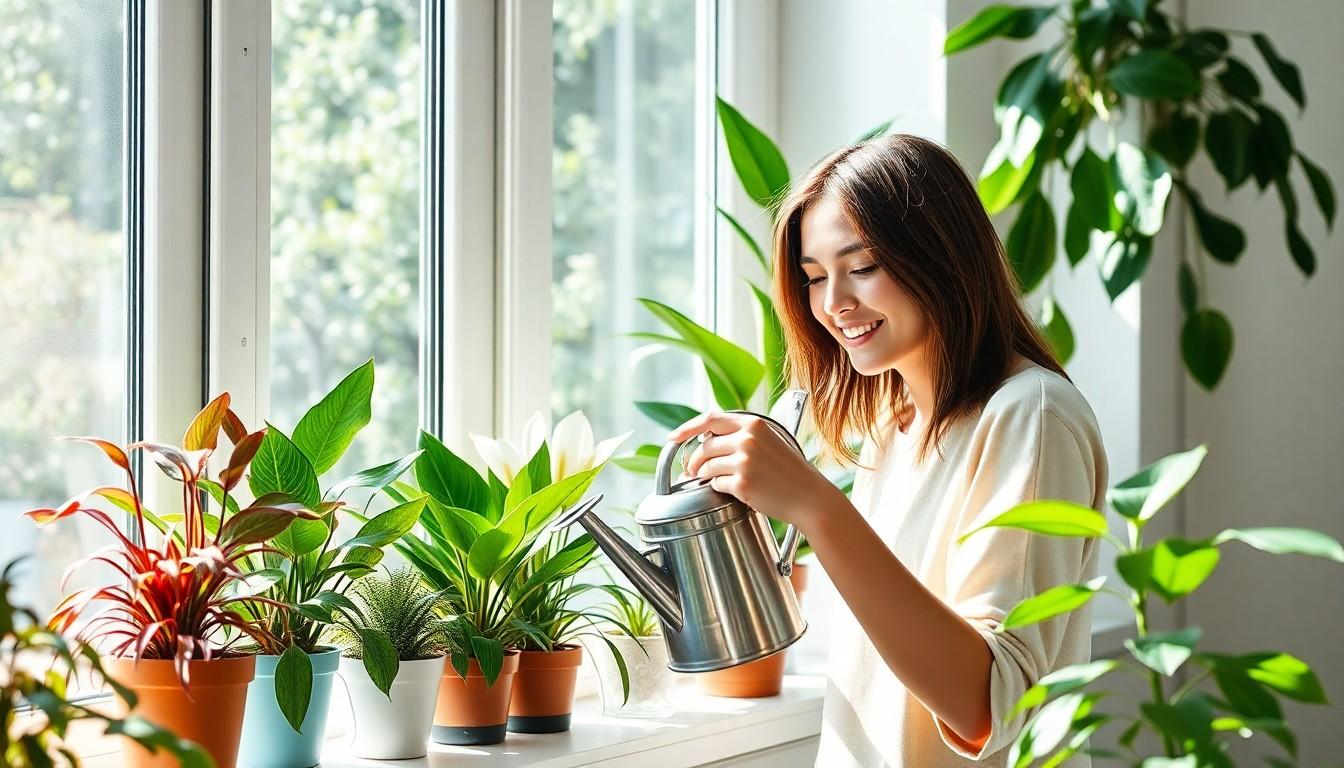Indoor air can sometimes feel like it’s auditioning for a role in a horror movie—stale, musty, and filled with mysterious odors. But fear not! The solution isn’t a can of air freshener; it’s a green army of plants ready to take on the challenge. These leafy superheroes not only brighten up a room but also work tirelessly to purify the air, making it fresher and healthier for everyone.
Overview of Air Purification
Indoor air quality often suffers from various pollutants, including dust, pet dander, and volatile organic compounds. Air purification plays a crucial role in creating healthier indoor environments. Studies indicate that certain houseplants can filter these harmful substances, significantly improving air quality.
Plants such as spider plants, peace lilies, and snake plants excel at absorbing toxins. These biological filters convert carbon dioxide into oxygen while removing harmful elements from the air. Research from NASA demonstrates that specific plant species can eliminate up to 87% of indoor pollutants within 24 hours.
Each plant contributes uniquely to air purification. For instance, the peace lily thrives in low light and can absorb ammonia, benzene, and formaldehyde. Meanwhile, spider plants are particularly effective at removing carbon monoxide and xylene, making them ideal for kitchens and garages.
Caring for these air-purifying plants requires minimal effort. Regular watering and adequate sunlight generally suffice for optimal growth. In return, these plants offer natural benefits and added beauty to indoor spaces. Their presence creates a more inviting atmosphere, which contributes to overall well-being.
Establishing a collection of air-purifying plants can lead to significant advancements in indoor air quality. Each plant interacts positively with its environment, fostering a fresh and clean atmosphere. Individuals interested in improving their home or office can select from a variety of these plants to suit their aesthetic preferences and air purification needs.
Benefits of Indoor Plants

Indoor plants offer numerous advantages beyond aesthetics. They play a crucial role in enhancing overall air quality.
Improved Air Quality
Plants like spider plants, peace lilies, and snake plants excel at filtering harmful pollutants. Studies show specific species can remove up to 87% of indoor toxins within 24 hours. Peace lilies thrive in low light and effectively absorb chemicals such as ammonia and formaldehyde. Additionally, spider plants target carbon monoxide and xylene, making them excellent choices for improving air quality. Regularly incorporating these plants results in fresher, healthier indoor environments. Optimizing plant placement throughout living areas further maximizes their air-purifying effects.
Mental Health Advantages
Incorporating indoor plants enhances mental well-being. Research indicates that exposure to greenery boosts mood and reduces stress levels. Individuals often report feeling more relaxed and focused in plant-rich spaces. Additionally, caring for plants fosters a sense of responsibility and connection to nature, which positively impacts mental health. Environments filled with plants encourage creativity and productivity. Selecting diverse plant species can create calming atmospheres, promoting overall happiness and peace.
Top Plants That Purify The Air Indoor
Indoor plants not only beautify living spaces but effectively purify the air, making them essential for healthier home environments. Here are some top choices:
Spider Plant
Spider plants thrive in low-light conditions and efficiently remove pollutants like carbon monoxide and xylene from the air. They’re easy to care for, needing only moderate watering and occasional sunlight. Its long, arching foliage adds texture to any room while actively filtering harmful substances. This resilient plant can produce baby spiders, making it fun to propagate and share with others.
Peace Lily
Peace lilies flourish in indirect light and help absorb harmful chemicals like ammonia and formaldehyde. Their glossy dark green leaves and stunning white blooms add elegance to any space. They’re also known for improving humidity levels, which can further benefit respiratory health. As a bonus, peace lilies require minimal watering and can thrive in various indoor conditions.
Snake Plant
Snake plants are virtually indestructible and well-suited for beginners. These hardy plants filter toxins such as benzene and formaldehyde while converting carbon dioxide into oxygen at night. Their upright, sword-like leaves create a striking visual element, enhancing the décor of both modern and traditional settings. Minimal watering is necessary, making them an excellent choice for busy individuals.
Boston Fern
Boston ferns excel in humid environments and effectively remove pollutants like formaldehyde and xylene from the air. They benefit from regular misting and thrive in indirect light, making them perfect for bathrooms or kitchens. The lush, feathery fronds add a touch of softness and elegance to interiors, providing a calming presence. Regular watering ensures they remain healthy and vibrant, enhancing their air-purifying qualities.
Tips for Caring for Indoor Air-Purifying Plants
Caring for indoor air-purifying plants enhances their ability to filter pollutants. Regular watering plays a crucial role in maintaining plant health. Most indoor plants thrive when the top inch of soil dries out between waterings. Overwatering can lead to root rot, so ensuring proper drainage is essential.
Sunlight requirements vary by species. For instance, peace lilies prefer low light, while snake plants tolerate direct sunlight. Placing plants in appropriate light conditions maximizes their air-purifying capabilities. Grouping plants together can also create a microclimate that boosts humidity, benefiting both plants and air quality.
Fertilizing indoor plants during the growing season promotes lush growth. Using a balanced fertilizer every four to six weeks provides necessary nutrients. Monthly checks for pests help to maintain plant health. Common pests include spider mites and aphids, which can be managed through insecticidal soap or neem oil.
Humidity levels also affect many indoor plants. They thrive in environments with higher humidity. Misting the leaves or using a pebble tray with water supports moisture retention. This practice particularly benefits Boston ferns, which excel in humid conditions.
Repotting every couple of years aids in plant growth. Choosing the right pot size ensures that roots have enough space to expand. Fresh potting soil replenishes nutrients and improves drainage.
Finally, understanding plant needs leads to a healthier indoor environment. Observing leaf color and growth patterns signals when adjustments are necessary. With care and attention, indoor plants can significantly enhance air quality while adding beauty to living spaces.
Conclusion
Incorporating air-purifying plants into indoor spaces offers a simple yet effective solution for enhancing air quality. These plants not only filter harmful pollutants but also elevate the aesthetic appeal of any room. By choosing varieties like spider plants and peace lilies, individuals can create healthier environments that promote well-being.
The benefits extend beyond air purification, as these plants foster a connection to nature that can improve mental health. With easy care requirements and significant advantages, adding greenery to homes is a smart choice. Embracing the leafy superheroes of indoor gardening can lead to fresher air and a more inviting atmosphere, ultimately contributing to a happier and healthier lifestyle.

